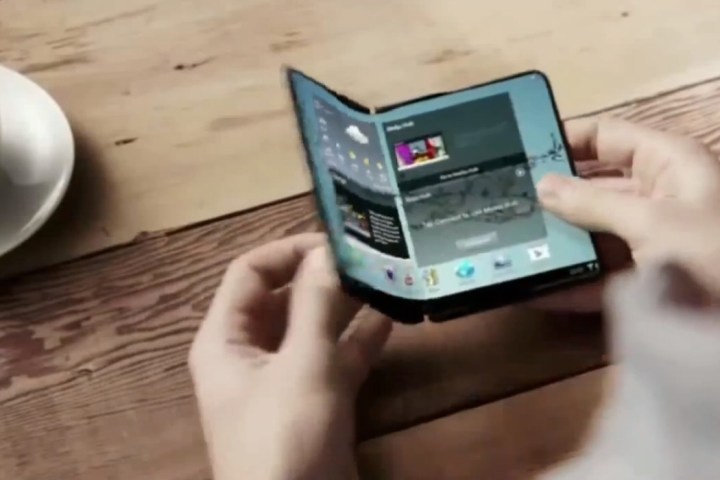
It seems like we hear Samsung’s foldable and rollable screens will arrive on commercial devices just about every year, but now the company could be getting closer to making it happen. The patents include a scrollable tube, a foldable smartphone, and a bendable book-like device.
The first patent discovered by Patently Mobile, depicts a scrollable tube that can be rolled out by grabbing the tab. The flexible display may be an OLED or a flexible LCD that uses a plastic film, rather than a glass substrate. Instead of pulling out the display, the patent shows an alternative method of pressing a button or icon on the side of the scroll to open the display with the desired app. So if you press the dialer icon or button on the scroll, presumably the display will open directly with the dialer app onscreen.
Other patents include a foldable smartphone and a device that opens off-center, so that users can use the tab on the left to open and see their favorite apps immediately, which is similar to the scrollable tube. The final foldable patent shows a device that resembles a book, using a hinge-like system. The front cover is a display, and opening the device makes it into a sort of tablet. The device appears bendable, but the patent offers no other information.
Samsung has been working on flexible displays for many years. The company showed off its first efforts at CES 2013 and revealed its first foldable phone prototype in a private meeting at CES 2014. Since, then we’ve heard several rumors that the foldable devices will debut as early as 2016. Another recent patent filing showed that the company is looking to implement force touch technology into its devices.
The patents could be for the company’s upcoming rumored flexible smartphone, codenamed Project Valley (or Project V), which may debut as early as January 2016 and could make an appearance at CES 2016. The patent applications were filed in the U.S. in May and published earlier this month. They were initially filed in South Korea in 2014.



